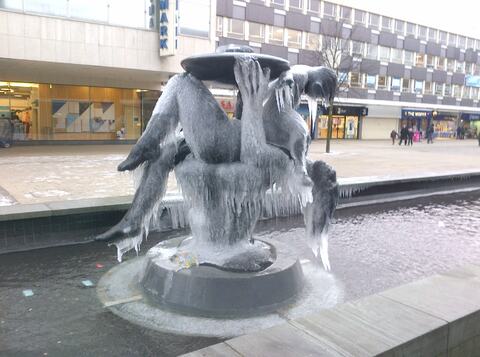A History of Basildon Borough
Basildon is a borough in Essex, England, encompassing the towns of Billericay and Wickford, along with their surrounding parishes. This area boasts a rich history, from early human habitation to its modern development as a significant urban centre.
Prehistoric and Roman Eras
Evidence of human settlement in the Basildon area dates back to prehistoric times. Archaeological discoveries, including flint tools, indicate that early hunter-gatherers utilised the land. Numerous sites of Bronze Age and Iron Age settlements have been unearthed across the borough, notably at Billericay, Wickford, Basildon, and Langdon Hills. Large settlements at Ramsden and Downham were continuously occupied from 550-150 BC, and a Bronze Age axe was found at Vange some years ago, providing tangible proof of early inhabitants.
During the Roman occupation of Britain, which lasted for at least four centuries, the Basildon area, like much of Essex, was part of the Roman province of Britannia. The local inhabitants and the surrounding countryside became Romanised. This period saw the construction of roads, the founding of new towns, and the organisation of local industries. While there are indications of Roman activity, including roads and possible villas, little physical evidence remains within the modern town of Basildon itself.

Also in this Section
From Roman Withdrawal to the Dark Ages
In AD 412, the Romans withdrew their legions from Britain to defend their Empire in Gaul, leaving Britain to defend itself. The 4th century saw the beginning of Saxon raids on the Essex coast. These raids intensified, leading to the country being overrun and the destruction of most vestiges of Roman civilisation in Eastern Britain, marking the start of the 'Dark Ages'.
The name "Basildon" itself is of Saxon origin, meaning 'Beorhtels Hill'. As the Saxons tended to favour settlements away from former Roman towns, it is possible that the Basildon area gained prominence during this period. Oral traditions suggest that Sebert, the first King of Essex (King of the East Saxons), resided at Burstead, and his kingdom even extended to London, which was then a desolate ruin. In AD 604, Mellitus, Bishop of the East Saxons and Pope Gregory's emissary, converted the heathen Saxons to Christianity. During the early Saxon period, the local villages, as they are known today, began to take shape.
Viking Incursions and Norman Conquest
From AD 800 onwards, the surrounding countryside was ravaged by the Danes. They navigated the numerous creeks and rivers in the area, with the River Crouch likely being navigable as far as Wickford. Initial skirmishes escalated into battles as local resistance became more organised. In AD 894, a party of Vikings was defeated at Benfleet after attempting to loot the Basildon area.
The arrival of William the Conqueror in 1066 ushered in the Norman era. Basildon is mentioned several times in the Domesday Book, compiled after the Norman Conquest. Sven the Sheriff, a Norman who lived at Rayleigh Castle and was known as Sven of Essex, held many lands in the county. Odo, Bishop of Bayeux and half-brother to William the Conqueror, also held significant lands but was later imprisoned for plotting to become Pope. Odo is believed to have commissioned the Bayeux Tapestry.
Perhaps the most colourful Norman figure in the area was Turold, another major landholder. Not wishing to be outdone by the bishop, for whom he also served as an under-tenant at Vange, Turold acquired as much land as possible within the county. He is remembered as one of the most unscrupulous Norman landlords, using the proceeds of his misdeeds to fund the defence and comfort of his castle at Rochester. Turold's portrait even appears on the Bayeux Tapestry, providing a visual record of Basildon's first Norman landlord.
Later Medieval Period and Early Modern Times
The Black Death of 1388, combined with a shift from agriculture to sheep farming, led to a general decline in the population of many Essex villages. This demographic change may explain why the hamlet of Basildon never seemed to grow significantly during this period.
During the English Civil War, many Essex men joined the Parliamentarian forces, known as the Ironsides. A grim reminder of these turbulent times is a clock face on a large house at Burstead.
Over the centuries, between the compilation of the Domesday Book and the 18th century, the spelling of Basildon varied considerably, including:
- 1176 - Berdlesdon
- 1200 - Bretlesden
- 1240 - Batlesdon
- 1510 - Bastelden
- 1594 - Basseldon
- 1602 - Bassendon
This detailed history highlights the long and varied past of the Basildon area, demonstrating its continuous human occupation and evolution through significant historical periods.
